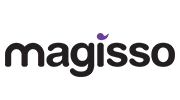Eastern Europe is embracing specialty coffee

The coffee industry in Eastern Europe has undergone a remarkable transformation in recent years, evolving from a nascent movement into a vibrant and dynamic market. Between 2016 and 2020, Eastern European green coffee imports increased at an average annual rate of 3.3%, representing steady growth.
Once dominated by traditional coffee consumption habits, countries like Romania, Poland, the Czech Republic, and Hungary are now home to a flourishing specialty coffee culture characterised by third wave cafés and skilled baristas.
In turn, consumers are becoming increasingly educated about specialty coffee, including factors like origin, processing methods, and brewing techniques. This shift reflects both broader global trends and a distinctive regional approach to specialty coffee that honours local traditions while embracing innovation.
Like in many other markets, specialty coffee events are often at the heart of this growth, creating vital networking opportunities and fostering community. As these events expand in scope and attendance each year, they are not just reflecting market growth and diversification in Eastern Europe; they are actively accelerating it.
To learn more about the booming specialty coffee culture in Eastern Europe, I spoke to Mihai Panfil, the founder of COFFeEAST.
You may also like our article on why emerging markets show promise for specialty coffee amid market volatility.


The rise of specialty coffee in Eastern Europe
While direct coffee imports from Eastern European countries, including Romania, Bulgaria, Croatia, Czech Republic, Hungary, Poland, Slovakia, and Slovenia, are still comparatively low to their Northern and Western counterparts, consumption in the region has been rising for many years now. According to data from the CBI Ministry of Foreign Affairs, consumption grew by about 6% per year between 2020 and 2024.
“Over the past two decades, the Eastern European coffee market has evolved from a bold experiment into a dynamic and expanding industry,” says Mihai Panfil, the owner of Origo Coffee in Bucharest, Romania and the founder of COFFeEAST, the Eastern European Coffee Culture Festival.
“Today, the Eastern European coffee sector is dynamic and rapidly growing. You can now see the region as one refined by expertise – a place where coffee culture continues to evolve with confidence and precision,” he adds.
Consumption continues to grow
The European Coffee Federation’s 2023/24 report shows that Slovenia has become the top importer of coffee in Eastern Europe, importing 430,565 60kg bags in 2023. Poland is the second-biggest importer of coffee in the region, importing about 344,249 bags of coffee in 2023, with Uganda, Brazil, and Vietnam being the top origin countries. Bulgaria and the Czech Republic follow, importing about 292,599 bags and 26,012 bags, respectively.
Although per capita consumption remains relatively low, a growing demographic of young, affluent consumers is driving the trend towards more premium coffee options. Additionally, social media has accelerated the spread of specialty coffee culture, with Instagram-worthy café designs and latte art becoming powerful marketing tools that attract new customers.
“Countries like Romania, Poland, Hungary, Czech Republic, and Bulgaria have seen remarkable growth in the specialty coffee sector,” Mihai tells me. “More independent coffee shops, roasteries, and barista competitions are emerging, pushing the industry forward.
“Romania, in particular, has become a regional leader, with cities like Bucharest, Cluj-Napoca, and Brașov fostering vibrant coffee communities that can now rival well-established markets in Western Europe.”


How events are transforming Eastern European coffee culture
As coffee consumption increases in Eastern Europe, both large second wave chains and smaller independent coffee brands are finding success in an increasingly competitive market. Romanian chain 5 To Go, for example, recently received investment funds to bolster its regional and international expansion plans.
Meanwhile, between 2013 and 2021, the number of specialty coffee shops and roasteries in Romania increased from only three to more than 120, while Hungary is now home to over 150 specialty coffee businesses. This signifies the growing consumer demand for quality coffee and the increasing appreciation for craft in their coffee experiences.
Over the last few years, there has also been a boom in specialty coffee-focused events in emerging markets more broadly. Increasing in both number and variety, the format of trade shows and festivals has evolved. They have long served as springboards for roasters and other coffee brands to market themselves; however, as education, networking, and competitions become more prominent fixtures, events are helping reshape consumption habits.
One example is COFFeEAST, with its second edition scheduled from 4 to 6 April 2025 at the Hala Laminor in Bucharest, Romania. The inaugural event attracted over 20,000 visitors, underscoring its significance in both the regional and international coffee markets.
“Building on the success of the first edition, this year’s event will be bigger, more immersive, and more impactful,” Mihai says. “We’re bringing together over 250 exhibitors from across the region, including professional equipment brands, green coffee importers, and industry leaders.”
Mihai adds that the festival will feature international guests, including Brazilian producer Augusto Borges, Swiss Barista Champion Andre Eiermann, ZHAW’s Samo Smrke, researcher and Q grader Rana Hassanieh, sensory expert and competition judge Anastasiia Shishkina, world-renowned bartender Martin Hudak, and World Coffee in Good Spirits Champion Manos Mamakis. This gives local and regional industry professionals the opportunity to connect with leading global experts in specialty coffee, supporting knowledge sharing and skill exchange.
“Visitors will have the chance to engage with over 150 specialty coffee roasters, artisans, and designers while more than 40 local and regional coffee shops will brew coffee for guests on rotation at the dedicated Eastern Coffee Shops Bar,” Mihai says.


Bridging the knowledge gap
Specialty coffee is still a niche market in Eastern Europe. In Poland, for instance, the specialty coffee sector accounts for less than 2% of the country’s coffee market, indicating the potential for significant growth. The increasing number of Specialty Coffee Association chapters and coffee festivals illustrates the rising interest in high-quality coffee.
“Specialty coffee consumption in the region is driven by local entrepreneurs who shape their cities through taste, craft, and hospitality. With sharp senses and a visionary spirit, they inspire communities and redefine what coffee culture can be,” Mihai says. “The dynamic interplay between tradition and innovation, a competitive drive, and time-honoured business models also help brands adapt to changing attitudes about coffee.”
Although it’s crucial for coffee events to have a business-to-business focus, a consumer-centric approach also helps bolster market growth in emerging markets like Eastern Europe. By connecting with industry professionals in an accessible environment, consumers have an opportunity to further their understanding of the craft, skill, and value of coffee.
“COFFeEAST is both a social and professional event, emerging at a time when the region stands out with its growing number of specialty cafés, roasteries, and skilled professionals, as well as an enthusiastic community of coffee lovers,” Mihai adds. “Exhibitors and attendees alike showed their appreciation for our first edition – proof that Eastern Europe is ready for an event that celebrates specialty coffee as both craft and culture.”


Supporting the future of specialty coffee in the region
As Eastern Europe’s specialty coffee landscape continues to mature, it increasingly reflects a unique regional identity rather than simply mimicking more established Western European or North American markets. Local roasters are developing distinctive approaches that honour their cultural heritage while incorporating modern approaches, creating coffee experiences that feel authentic to consumers.
A key part of this is celebrating and rewarding regional coffee professionals who contribute to the growth and development of the industry.
“Events like COFFeEAST help elevate regional talent. The GreatEast Cup competition provides a platform for Eastern European baristas to showcase their expertise, gain international recognition, and push the boundaries of what’s possible in specialty coffee,” Mihai says. “It’s a fun, inclusive, high-energy competition that recognises creativity, camaraderie, and pure coffee passion.”
The GreatEast Cup competition will include two formats: the solo Mastery Cup, where baristas have to prepare signature and espresso and milk beverages, and the duo-based Team Cup, where participants must take part in a speed service round and a latte art throwdown.
“We’ll also have interactive workshops and lectures covering everything from coffee to creative entrepreneurship,” Mihai adds. “The cupping room will feature exclusive tastings hosted by renowned green coffee companies and coffee farms.”
Looking ahead
International coffee shop chains are rapidly influencing Eastern Europe as local consumers continue to spend more on premium coffee experiences. Small players are leveraging this growth by adapting their business models to each country’s consumer behaviour patterns while also educating people about coffee quality and value.
“At Origo, we have a saying: we are not just a coffee shop, we are a barista concert. I envision an industry where coffee knowledge and talent continue to evolve and be celebrated,” Mihai tells me. “Growth should go deep, not just wide – value lies in depth, not expansion – keeping pace with technology and trends.
“At the same time, I see an ultra-agile industry built on scalable, replicable models. Both paths have value, and they can coexist. When craftsmanship and business align, real growth happens,” he adds. “One thing is certain: the rise of coffee tourism will shape the region. Cities like Bucharest, Warsaw, Prague, and Budapest already have strong specialty coffee scenes.
“Still, in the next decade, coffee tourism will become a defining force, attracting a global audience eager to explore these vibrant markets.”


The future of specialty coffee in Eastern Europe appears exceptionally bright, with room for continued growth across all segments of the market. As consumer sophistication increases and more cafés, roasteries, and coffee businesses emerge, events will play an increasingly vital role in supporting growth.
These gatherings provide the essential infrastructure for knowledge sharing, relationship building, and market development that will define the next chapter of Eastern Europe’s specialty coffee story.
Enjoyed this? Then read our article on how specialty coffee is evolving outside of mature markets.
Photo credits: COFFeEAST
Perfect Daily Grind
Please note: COFFeEAST is a sponsor of Perfect Daily Grind.
Want to read more articles like this? Sign up for our newsletter!









